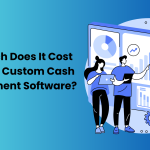There’s no doubt that a website is one of the most essential components of any business. It is how you showcase your products and services to potential customers, it is how you fuel your business growth, and it’s how you build your first impression.

Building a website comes with its intricacies, detailed cost analysis and expense management. The cost of a website depends on various factors such as the website type, design, complexity, structure, features and available timeline. Moreover, the website customization makes it a tricky job especially if you’re a noob in this field.
In this article, we’ll analyze the website development cost in 2024 and offer guidelines on what to consider when determining which features are most crucial! By grasping our suggestions, you’ll be able to outline the right features that suit your business web development needs.
Let’s get down to the brass tacks – how much will web development cost in 2024?
Determining the Factors That Determine Web Development Costs
Some of the important factors that influence the development of a website include:
Type of Website
The type of your website is one of the crucial factors affecting the price tag. A simple website will cost you less as compared to a highly complex website.
Website types also include simple business website, E-commerce website, blog, custom web app, community website, catalog, news website and SaaS website. Each type requires varying cost ranges and hence affect the overall budget of the making of a website.
Website Complexity & UI / UX Design
The degree of complexity needed to develop a website is one of the most crucial things to take into account when calculating the cost to create it. Without stating if your website requires a very advanced design or a minimalistic UI/UX design, you might not be able to receive a comprehensive estimate of the cost.

If you want a single-page website with minimalistic design and basic functionality, your website will be developed in cheaper price tag. However, if the requirement is a multi-functional, highly complex website with multiple API integrations or E-commerce integrations; the cost will be higher comparatively.
Several factors affect a website’s complexity:
- Number of pages / screens
- Set of features / functionalities
- Count of integrations with third parties
- Types of images / media used
In summary, the cost is directly correlated with the number and complexity of features.
These variations in individual websites also account for the discrepancies in web development complexity levels. The cost of creating a website is also determined by variations in complexity-driven development procedures, which can vary by more than 300%.
We have divided website complexity in three ranges. Let’s get down to the basics of each.
Basic Complexity
The basic complexity, which typically ranges from $5,000 to $30,000, is suitable for corporate websites with basic capabilities.
With custom UX/UI design, CMS integration, a basic database on the backend, and custom animations on the front end, this website has up to fifteen pages.
The following professionals are typically needed in order of decreasing complexity: a project manager, WordPress or full-stack developers, UX/UI designer, and QA engineer.
Websites with little complexity include portfolios, blogs, and landing pages and the development time estimates to roughly two months.
Average Complexity
Such websites have a higher user footprints and typically displays dynamic, complex yet functional content.
The development typically costs between $30,000 and $80,000.
Common examples of the website’s complexity include up to 50 pages of distinct UX/UI design, an intricate database, third-party connectors, a custom frontend with animations, and search engine optimization.
Project managers, business analysts, UX/UI designers, senior backend and frontend developers, two QA testers, DevOps, support specialists, and an SEO manager, copywriter, and link builder are typically needed for this kind of complexity.
Cloud software solutions and major business websites are examples of websites with an average level of complexity. A project with average complexity takes four to six months to develop.
Difficult Complexity
Robust design, cloud systems, versatile linkages, and increased infrastructure are necessary for complex websites. The development typically costs between $80,000 and $300,000.
Engaging UX/UI design, work with numerous large databases, intricate front-end interactions, and a sizable maintenance staff are all part of this intricate website.
Canva, Reddit, and LinkedIn are a few websites that serve as excellent examples of this kind of development complexity.
Its high cost can be attributed to the increased number of hours needed to develop features. Difficult highly complex websites take up to a year or more to build.
Choice of Development: In-House, Freelancer Or Third-Party
Since the new development trends are emerging in 2024, the cost may varies depending on how you decide to build your website. There are mainly three options that play a key role in estimating the website cost. Let’s discuss them one-by-one.
In-House Development
In-house website development involves the group of people from your existing resources. You get them to work under your surveillance, so your objectives, work ethics and team culture is automatically translated.
You get to use your in-house team on multiple projects and can build long-term working relationships with the team.
On the flip side, it can cost you more since you have to pay salaries and long-term benefits. Engaging your in-house resources in your web development project can limit creativity and innovation that you may get while working with a new team every time. Moreover, to manage the discrepancies you will need to upskill your in-house developers and project managers.
Hiring a Freelancer for Web Development
Hiring a freelancer also seems a reasonable option to manage the cost of website development. Here a few pros and cons to help you decide the best for your website. Compared to in-house or agency options, freelancers are usually less expensive.

They might work well for modest tasks. So if you have a website with average complexity, freelancer might be a good and affordable choice.
On the cons side, their abilities are limited because they do not have the resources of a larger team. They are hired on ad hoc basis, so it is often difficult to build cordial relationships with them.
Hiring a Third-Party Development Agency
Third-party outsourcing works well if you have a strictly tight timeline to build a website. The cost of outsourcing your website to a development agency is always on the higher side. By hiring an agency, you can incorporate high level of skills, experience and resources to handle difficult-complexity tasks.
On the flip side, your direct control is compromised as you have less communication and onboarding about the project.
Content Management System Development
Every now and then, you might want to build, modify, and oversee the content of your website. Furthermore, you shouldn’t contact engineers each time you wish to make a small adjustment.
For all of the aforementioned duties to be completed efficiently, CMS software is required.
Some CMS engines, such as WordPress, Drupal, and Shopify, may be encountered. Though they are meant to save development time and money when building a website, you will find that their usefulness is limited.
So how much does a CMS development cost? It could cost anything from $3,000 to $9,000 or more, and take an average of three to eight weeks.
Wrap Up
The cost of website development in 2024 has reduced significantly due to various entrants providing web development services. The cost, however, still depends on multiple factors such as features, complexity, UI/UX design intricacies and the choice of vendors for web development project.
Our web development cost guide will help you grasping these concepts and cost management practices. So that you can gravitate towards making informed decisions for your website, balancing your objectives and web development budget.




